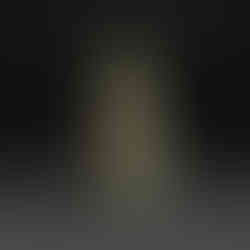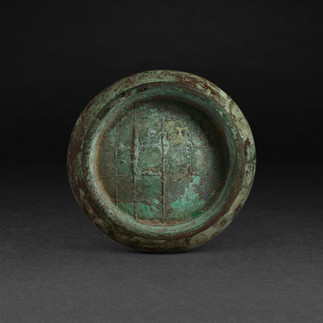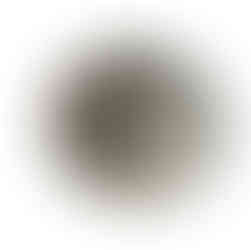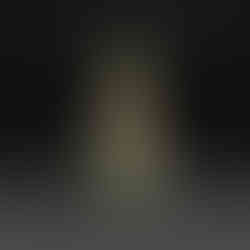拍賣筆記 vol.169 佳士得香港:埃斯肯納齊,西周早期青銅舉父丁卣 - An Early Western Zhou Dynasty Archaic Bronze Wine Vessel And Cover, ‘Ju Fu Ding’ You
- SACA

- Apr 14
- 8 min read

本卣於蓋内及器内各別鑄有「舉父丁」三字銘文。此銘文於商代晚期至西周早期青銅器上頗爲常見。瑞士玫茵堂藏有一件銘文相同之青銅盉,見《玫茵堂藏中國銅器》,卷一,香港,2013年,頁56-57,圖版31號,可資比較。
紋飾近似的青銅卣包括舊金山亞洲藝術 Avery Brundage藏一件犀牛耳提樑卣,典藏編號:B60B82;及瑞士玫茵堂藏一獸耳提樑卣,見前書頁56-57,圖版30號。

西周早期 青銅舉父丁卣
EARLY WESTERN ZHOU DYNASTY, 11TH-10TH CENTURY BC
估價
港元 750,000 – 港元 1,200,000
8 5⁄8 in. (21.8 cm.) high
來源
私人舊藏
John Sparks Ltd.,倫敦,1954年
H.G.W. Peters 舊藏
埃斯肯納齊,倫敦,1999年
John J. Studzinski (1956年生) 舊藏
埃斯肯納齊,倫敦,2014年
玫茵堂舊藏
《權命/征榮:吉金鑄國》,紐約蘇富比,2022年9月20日,拍品16號
出版
埃斯肯納齊,倫敦,《Ancient Chinese bronzes from an English private collection》,倫敦,1999年,圖版8號
鍾柏生、陳昭榮及黃銘崇等編,《新收殷周青銅器銘文及器影彙編》,台北,2006年,編號1911
吳鎮烽,《商周青銅器銘文暨圖像集成》,卷21,上海,2012年,編號12067

FAQ "舉父丁" (Ju Fu Ding)
「舉父丁」銘文的意義為何?
「舉父丁」銘文可解釋為「舉氏祖丁」,乃對「丁」字輩男性祖先的敬獻銘辭。「舉」為氏族名,「父丁」則為受祭祖先之稱謂,屬於商末至西周早期青銅器上常見的祖先獻器銘文。此銘文同時鑄於器蓋與器腹內壁,為此時期之慣例,其作用在於標明器主身份與所祭祖先,並賦予器物祭祀與紀念之性質。值得注意的是,梅毅堂舊藏另有一件銅「盉」器銘文亦作「舉父丁」,顯示此類祭器可能為同一家族所製成套之組合器,進一步佐證其家族性質與祭祀用途。
此為何種類型的青銅器,其功用為何?
本器為「卣」型青銅器,屬有蓋附提梁之盛酒容器。卣為商周時期極具代表性的酒器類型,主要用於宗廟祭祀或重大典禮中盛貯、斟酌酒液。由於酒在當時的祭祀文化中佔據核心地位,卣等酒器遂成為上層社會極為珍重的禮器。
本件青銅卣的斷代與文化背景為何?
根據其器形風格與銘文特徵,此件卣可斷代至西周早期,約為西元前十一至十世紀。此一時期銅器製作技術承襲商代並有進一步發展,禮制亦日趨制度化,禮器的使用逐漸標誌著家族宗法秩序與政治權力的延續。
文獻中提及之可資比較的同類青銅器有哪些?其相似性為何?
相關比較例包括梅毅堂收藏之銅「盉」,亦銘「舉父丁」,顯示其與本件為同源氏族之禮器組件。此外,另有兩件具有相似裝飾帶(由三條並列的獸紋帶組成)之卣器被提及:其一為布倫迪奇藏(Avery Brundage Collection)之獸首提梁卣,另一為梅毅堂舊藏之帶有動物首飾鈕與長篇銘文之卣。此類器物間之共通特徵反映西周早期青銅裝飾風格之成熟與制式化。
此件青銅卣的傳承與收藏歷史為何?
本器來源清晰,最早可溯至1954年時由倫敦古董商John Sparks Ltd.所持,後為H.G.W. Peters收藏,1999年由Eskenazi Ltd.售出,進入John J. Studzinski藏中。2014年重返Eskenazi,隨後納入梅毅堂收藏,並於2022年於紐約蘇富比釋出。其長期為英國與國際重要收藏家與古董商所遞藏,足證其藝術與歷史價值獲高度認可。
關於「舉」氏或「父丁」可推論何種資訊?
儘管僅由此件器物尚不足以重構「舉」氏或「父丁」之具體歷史背景,然透過重複出現之「舉父丁」銘文,及與其他禮器的對照,至少可知此氏族於西周初期具備製作成套青銅禮器之能力,應為地方上層貴族之一。「父丁」應為該氏祖先,獲後代以禮器祭祀紀念,其社會地位應屬不凡。進一步瞭解此氏之歷史,仍待考古發掘與金文整理之佐證。
此器對於理解西周初期青銅鑄造與禮儀制度有何貢獻?
本件卣器在造型、紋飾與銘文等方面,體現西周早期青銅鑄造技術之精良與禮器體系之規範。其整體比例協調,紋飾層次分明,提梁與蓋鈕動物造型寫實,銘文鑄造工整清晰,均為此一時期高水平作品之象徵。藉由此器與其他同時期器物之比較,學界可進一步探討從商晚期至西周初期在器型、制度與家族宗法觀念上的連續與變革。
本器曾見於何處出版或展出?
此件卣已錄入多部青銅器權威出版,如Eskenazi所出版之《Ancient Chinese Bronzes from an English Private Collection》(1999)、《新收殷周青銅器銘文暨器影彙編》(2006)、《商周青銅器銘文暨圖像集成》(2012)等。其曾歸梅毅堂舊藏,並於2022年紐約蘇富比釋出,反映其在學界與收藏界之高知名度。儘管未具體記錄展覽資訊,但其出版紀錄與市場流通已顯示其應曾被公開展陳於重要展覽場合。

AN ARCHAIC BRONZE WINE VESSEL AND COVER, ‘JU FU DING’ YOU
EARLY WESTERN ZHOU DYNASTY, 11TH-10TH CENTURY BC
Estimate
HKD 750,000 – HKD 1,200,000
8 5⁄8 in. (21.8 cm.) high
PROVENANCE
A private collection
John Sparks Ltd., London, 1954
H.G.W. Peters
Eskenazi Ltd., London, 1999
John J. Studzinski (b. 1956)
Eskenazi Ltd., London, 2014
The Meiyintang Collection
Sold at Sotheby’s New York, POWER/CONQUEST: The Forging of Empires, 20 September 2022, lot 16
LITERATURE
Eskenazi, London, Ancient Chinese bronzes from an English private collection, London, 1999, no. 8
Zhong Baisheng, Chen Zhaorong, and Huang Mingchong, et al., ed., Xinshou Yin Zhou qingtongqi mingwen ji qiying huibian [Compendium of inscriptions and images of recently included bronzes from Yin and Zhou dynasties], Taipei, 2006, no. 1911
Wu Zhenfeng, Shang Zhou qingtongqi mingwen ji tuxiang jicheng [Compendium of inscriptions and images of bronzes from Shang and Zhou dynasties], vol. 21, Shanghai, 2012, no. 12067

The three-character inscription cast on the underside of the cover and the inside of the vessel, can be translated as Ju Fu Ding, or ‘Father Ding of the Ju clan’, which is frequently found on inscriptions on bronze vessels of the late Shang dynasty and early Zhou dynasties, with a gradual evolution of style.
Compare to a bronze wine vessel, he, cast with the same inscription, in a slightly different style, illustrated by Christian Deydier, Chinese Bronzes from the Meiyintang Collection, Volume 1 Annexe, Hong Kong, 2013, pp. 56-57, no. 31.
Other archaic bronze you adorned with closely related triple bands are known, including one from the Avery Brundage Collection in the Asian Art Museum, San Francisco (object no. B60B82), with a handle terminating in rhinoceros heads; and another with a five-character inscription, also with a handle ending with two animal heads illustrated in by Christian Deydier, Chinese Bronzes from the Meiyintang Collection, Volume 1 Annexe, Hong Kong, 2013, pp. 54-55, no. 30.

FAQ "舉父丁" (Ju Fu Ding)
What is the significance of the inscription "舉父丁" (Ju Fu Ding) found on this bronze you?
The inscription "舉父丁" (Ju Fu Ding), meaning approximately "Father Ding of the Ju clan," is a dedication to a male ancestor, Ding. The presence of this inscription on both the cover and the interior of the vessel is a common practice on late Shang and early Western Zhou dynasty bronzes. It served to identify the owner or commissioner of the vessel and to honor their lineage, suggesting a ritual or commemorative purpose for the object. The mention of a bronze he (another type of vessel) in the Meiyintang Collection bearing the same inscription highlights the potential existence of sets of ritual vessels belonging to the same lineage or individual.
What type of bronze vessel is this, and what was its likely use?
This bronze artifact is identified as a you (卣), a type of lidded wine vessel with a swing handle. These vessels were prominent during the Shang and Zhou dynasties in ancient China and were primarily used in ritual ceremonies to hold and pour wine. The consumption of wine played a significant role in ancestral rites and other important social and political events during this period, making you and other bronze wine vessels highly valued objects.
What is the estimated date and cultural period of this you?
Based on its stylistic features and the inscription type, this you is dated to the early Western Zhou Dynasty, specifically the 11th-10th century BC. This period followed the Shang Dynasty and marked a significant phase in the development of Chinese civilization, characterized by evolving bronze casting techniques and ritual practices.
What are some comparable bronze vessels mentioned in the source, and what similarities do they share?
The source mentions several comparable bronze you vessels. One is a he in the Meiyintang Collection with the same "舉父丁" inscription, indicating a possible connection in terms of ownership or patronage. Additionally, two other you vessels with similar decorative triple bands are noted: one in the Avery Brundage Collection featuring a rhinoceros-headed handle and another in the Meiyintang Collection with an animal-headed handle and a longer inscription. These comparisons highlight shared artistic styles and decorative motifs prevalent during the early Western Zhou period.
What is the provenance history of this specific bronze you?
This you has a well-documented provenance, tracing its ownership back to at least 1954 when it was in the possession of John Sparks Ltd. in London. It subsequently belonged to H.G.W. Peters, then Eskenazi Ltd. (London) in 1999, followed by John J. Studzinski. It later returned to Eskenazi in 2014 and was part of the renowned Meiyintang Collection before being sold at Sotheby's New York in 2022. This detailed history underscores its significance and desirability in the art market.
What can be inferred about the "Ju" clan or "Father Ding" from this artifact and the inscription?
While the inscription "舉父丁" (Ju Fu Ding) provides a personal and lineage identifier, this single artifact offers limited information about the broader "Ju" clan or the specific individual "Father Ding." The inscription suggests that Father Ding was an ancestor who was likely honored through the creation and use of this ritual vessel. The repetition of this inscription on other bronze vessels, like the he mentioned, hints at a family or lineage that commissioned multiple ritual objects. Further archaeological or textual evidence would be needed to understand more about their social standing or historical context.
How does this bronze you contribute to our understanding of early Western Zhou bronze casting and ritual practices?
This you, with its inscription and stylistic features, is a valuable example of early Western Zhou bronze casting technology and artistic design. The precision of the casting, the presence of a dedicatory inscription, and the decorative motifs all reflect the advanced craftsmanship and the importance of ritual in this period. Comparing it with similar vessels helps scholars to understand the evolution of bronze forms, the standardization of certain inscriptions, and the continuity or change in ritual practices between the late Shang and early Western Zhou dynasties.
Where has this bronze you been published or exhibited?
This you has been documented in several significant publications on Chinese bronzes, including Eskenazi's "Ancient Chinese bronzes from an English private collection" (1999), "Xinshou Yin Zhou qingtongqi mingwen ji qiying huibian" (2006), and "Shang Zhou qingtongqi mingwen ji tuxiang jicheng" (2012). Its inclusion in the Meiyintang Collection and its sale at Sotheby's New York in 2022 also indicate its prominence in the art world, suggesting it has likely been exhibited on various occasions, although specific exhibition details are not provided in this excerpt.































Comments